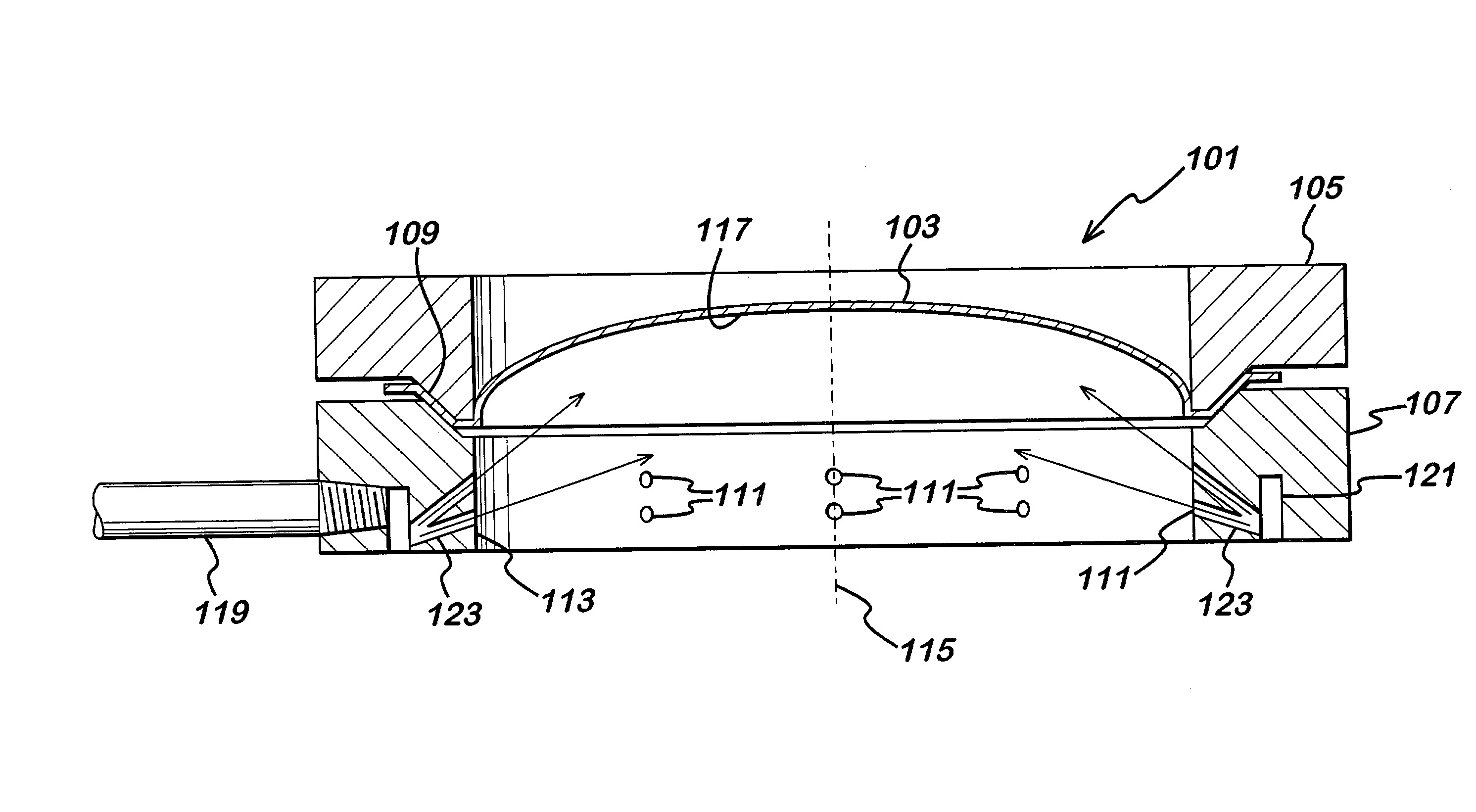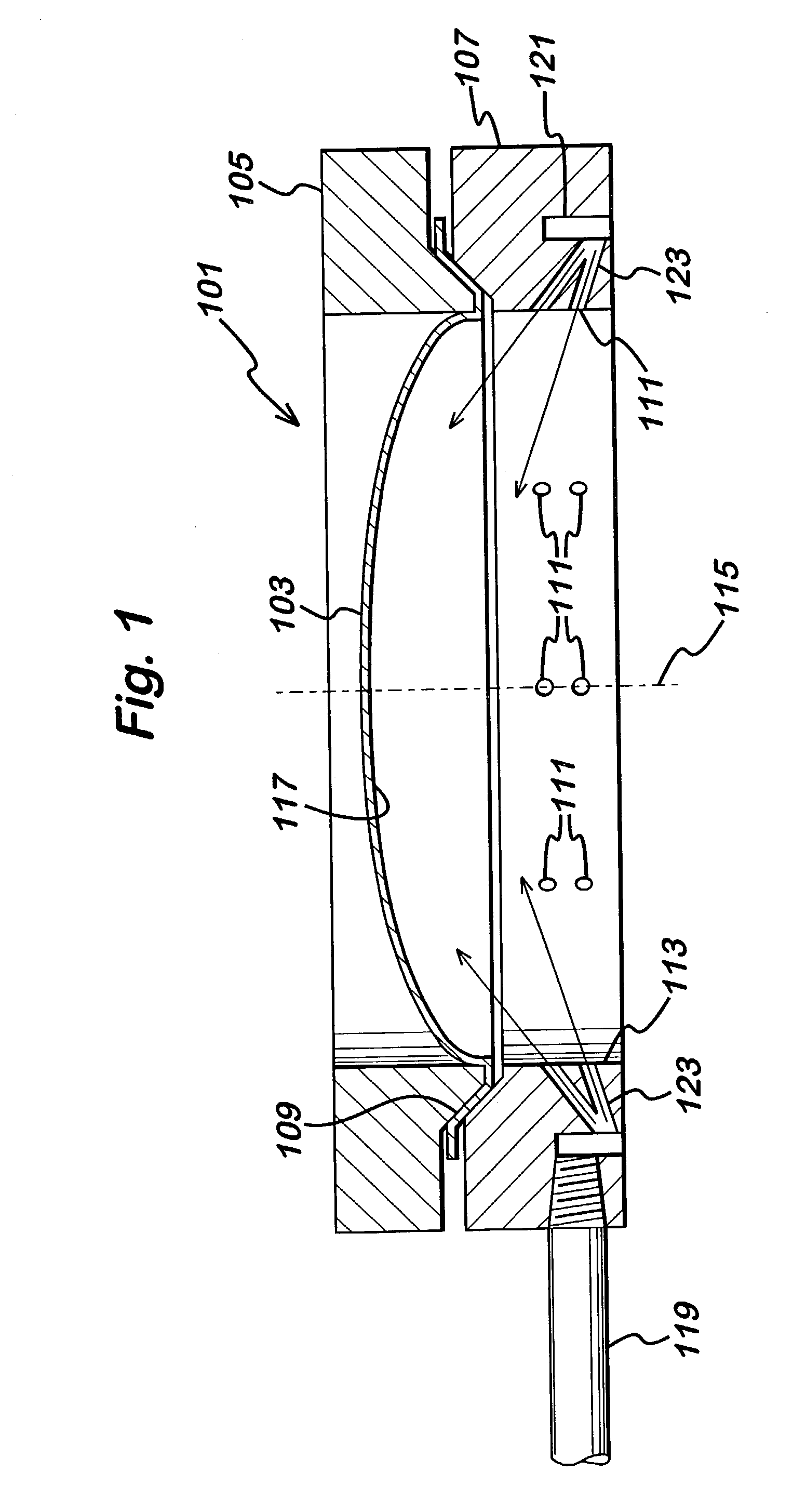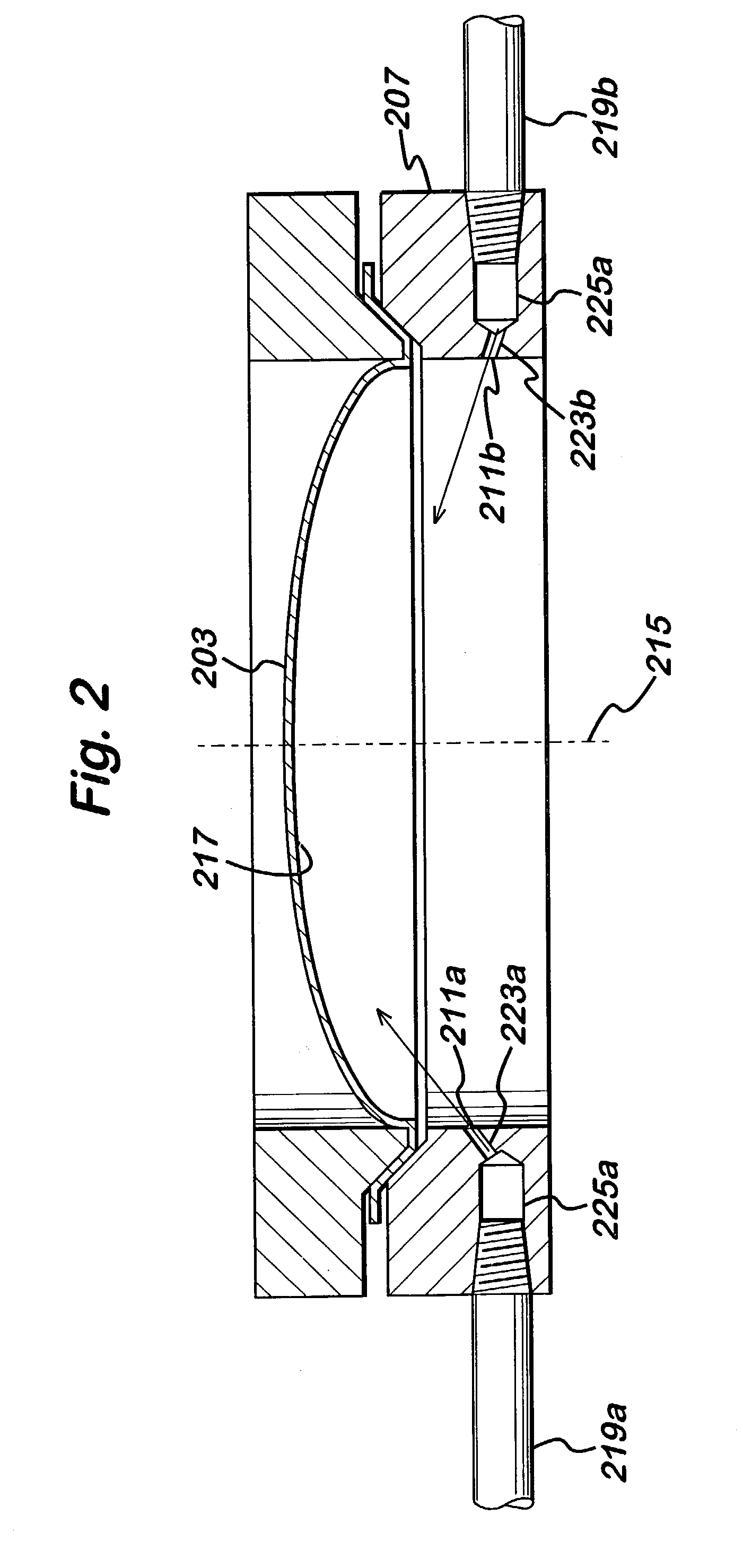Prevention of unwanted material accumulations
a technology for unwanted materials and accumulations, applied in the direction of valve housings, container discharge methods, functional valve types, etc., can solve the problems of affecting the chemical process industry on a daily basis, limiting process flow, and initiating undesirable side reactions
- Summary
- Abstract
- Description
- Claims
- Application Information
AI Technical Summary
Problems solved by technology
Method used
Image
Examples
example
[0046]A flush ring is placed adjacent to the rupture disk holder on the 8-inch diameter top process connection nozzle of an acrylic acid distillation column in the manner as shown in FIG. 3. A 316-teflon-316 composite rupture disk (available from Continental Disc Corp.) was installed in the holder. The flush ring had an internal diameter 7½ inches and comprised two sets of fluid ports. The first set of ports comprises 8 equally spaced 3 / 32-inch diameter ports set at an angle of between 45 and 90 degrees relative to the axis of the ring. The second set of ports comprises 8 equally spaced 3 / 32-inch diameter ports set at an angle between 0 and 45 degrees relative to the axis of the ring. The flushing ring further comprises an open distribution channel which is sealed upon installation against a standard gasket flange. After installation, a flushing fluid is introduced through the ring which facilitates the removal of condensed polymerizable acrylic acid monomer from the upstream (lower...
PUM
 Login to View More
Login to View More Abstract
Description
Claims
Application Information
 Login to View More
Login to View More - R&D
- Intellectual Property
- Life Sciences
- Materials
- Tech Scout
- Unparalleled Data Quality
- Higher Quality Content
- 60% Fewer Hallucinations
Browse by: Latest US Patents, China's latest patents, Technical Efficacy Thesaurus, Application Domain, Technology Topic, Popular Technical Reports.
© 2025 PatSnap. All rights reserved.Legal|Privacy policy|Modern Slavery Act Transparency Statement|Sitemap|About US| Contact US: help@patsnap.com



